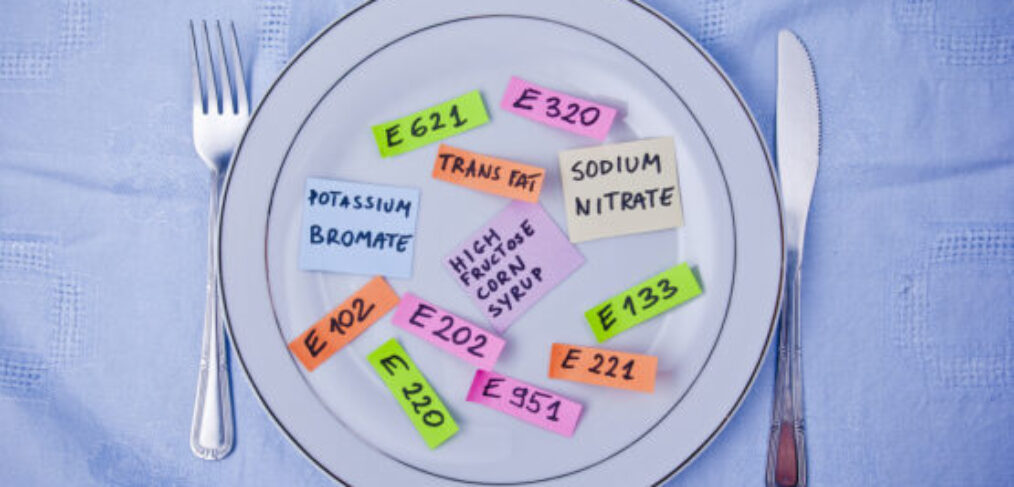What’s Hiding In Natural Flavors?

Natural Flavors. What comes to mind when you read this term? Perhaps a freshly squeezed lemon added to your mineral water, or a sprig of mint served as a garnish on your afternoon tea?
While those two examples are indeed flavors we can find in nature, oftentimes when we see this term on the ingredient label of a packaged ‘food’ (if we can even call it that), it’s anything but.
For example, guess what one of the most common natural flavors is?
MSG, an excitotoxin, a type of harmful chemical which tricks our brain into overeating while creating addiction, and linked with obesity, metabolic disorders, Chinese Restaurant Syndrome, neurotoxic effects and detrimental effects on the reproductive organs (1)
Another one you’ve probably seen is HVP, Hydrolyzed Vegetable Protein.
What is it?
A flavor enhancer made from plant-based protein sources, such as soy, corn, and wheat. It’s widely used in many food items, such as soups, seasonings, snack foods, instant and frozen food products, and many other processed foods.
The adverse effects of hydrolyzed protein include anxiety, asthma, attention deficit syndrome, bloating, burning sensations, carpel tunnel syndrome, chest pains, depression, diarrhea, confusion, dizziness, drowsiness, infertility, insomnia, and heart diseases (2).
Ready for a few more surprising ones?
Shellac – used on Skittles and other candies to make them shiny, comes from the sticky secretion of the Kerria lacca beetle in East Asia.
L-Cysteine, an amino acid and flavor enhancer in pizza and crackers, is extracted from human hair or duck feathers.
Castoreum, aka “natural raspberry flavor” comes from the anal glands of beavers, secreted to mark their territory.
Carrageenan is a starch extracted from various types of algae such as Eucheuma, Kappaphycus, or Irish Moss. However raw, unprocessed Irish Moss is very different, and is also called carrageenen (3)
Also on the natural flavors list?
The omnipresent corn syrup.
“The FDA has concluded that “natural” flavors include those products derived from processes such as those used in corn refining. Corn syrup, high fructose corn syrup, and crystalline fructose are made from corn, a natural grain product, and are therefore consistent with the definition of natural.” (4)
You get the idea… anything goes.
Per the FDA, Natural Flavors are means: “ the essential oil, oleoresin, essence or extractive, protein hydrolysate, distillate, or any product of roasting, heating or enzymolysis, which contains the flavoring constituents derived from a spice, fruit or fruit juice, vegetable or vegetable juice, edible yeast, herb, bark, bud, root, leaf or similar plant material, meat, seafood, poultry, eggs, dairy products, or fermentation products thereof, whose significant function in food is flavoring rather than nutritional. Natural flavors, include the natural essence or extractives obtained from plants listed in subpart A of part 582 of this chapter, and the substances listed in § 172.510 of this chapter (5).
Note the section which states that the function is flavoring rather than nutritional.
In fact, not only is the function not nutritional, any given natural flavor may have just the opposite effect.
Why?
The use of natural flavorings is Generally Recognized As Safe (GRAS) by the FDA and does not require premarket approval, but manufacturers must ensure that the flavoring is safe for consumption and properly labeled.
In other words, it is up to the companies which use the over 2,500 natural flavors in the US to ensure that their ingredients are safe.
And while food processors must list all of the ingredients on a food label, flavor manufacturers do not have to disclose their ingredients. They can add synthetic solvents, preservatives, emulsifiers, carriers and other additives to a flavor that qualifies as natural under current regulations (6).
“Natural flavors” are a far cry from what consumers might expect, as they can contain both artificial and synthetic chemicals (often used as processing aids). Nonetheless, without a legally binding Natural regulation, there has been little opportunity to contest the naturalness of natural flavors in the past (7).
The FDA states on their site (8), “ Under the Federal Food, Drug, and Cosmetic Act, a food additive must be authorized by the FDA before it can be used in food on the market”.
However, if an additive happens to fall into the category mentioned above, “GRAS”, it is NOT included in the definition of a food additive and therefore does not require pre-market review by the FDA.
In some cases, additives may be completely legally added to natural flavors until proven harmful; case in point: Brominated Vegetable Oil. Just last month, California was the first state to ban 4 food additives for cancer, other health risks Brominated vegetable oil, potassium bromate, propylparaben and red dye 3, which can be found in candy, cookies and more, will be banned starting in 2027 due to links to cancer other health effects.
Are you feeling confused yet?
It is indeed a bewildering conversation, yet with a somewhat less puzzling solution: the easiest way to eliminate these sneaky and harmful chemicals from entering our bodies is to just stop eating them.
Yes, it may feel inconvenient to cease buying ready to go everything, but since when did food in all of its phases fall into the category of something we need to get done quickly?
Food, REAL food, as a foundational staple not only for the health of an individual, but also for that of the local community and planet is where it’s at.
The more we can actually purchase real food and prepare it, the more we can ensure we’re not getting a lot in our diet that we never intended to.
(1) https://www.ncbi.nlm.nih.gov/pmc/articles/PMC5938543/
(2) https://www.sciencedirect.com/topics/agricultural-and-biological-sciences/hydrolyzed-protein
(3) https://janeshealthykitchen.com/beware-toxic-natural-flavors/
(4) https://corn.org/wp-content/uploads/2009/12/CornSweetenerNatural.pdf
(5)https://www.accessdata.fda.gov/scripts/cdrh/cfdocs/cfcfr/cfrsearch.cfm?fr=501.22
(6)https://www.nytimes.com/2019/02/01/well/eat/are-natural-flavors-really-natural.html
(7)https://pubmed.ncbi.nlm.nih.gov/29140655/
(8)https://www.fda.gov/food/food-additives-and-gras-ingredients-information-consumers/understanding-how-fda-regulates-food-additives-and-gras-ingredients
(9)https://www.npr.org/2023/10/10/1204839281/california-ban-food-additives-red-dye-3-propylparaben-candy





